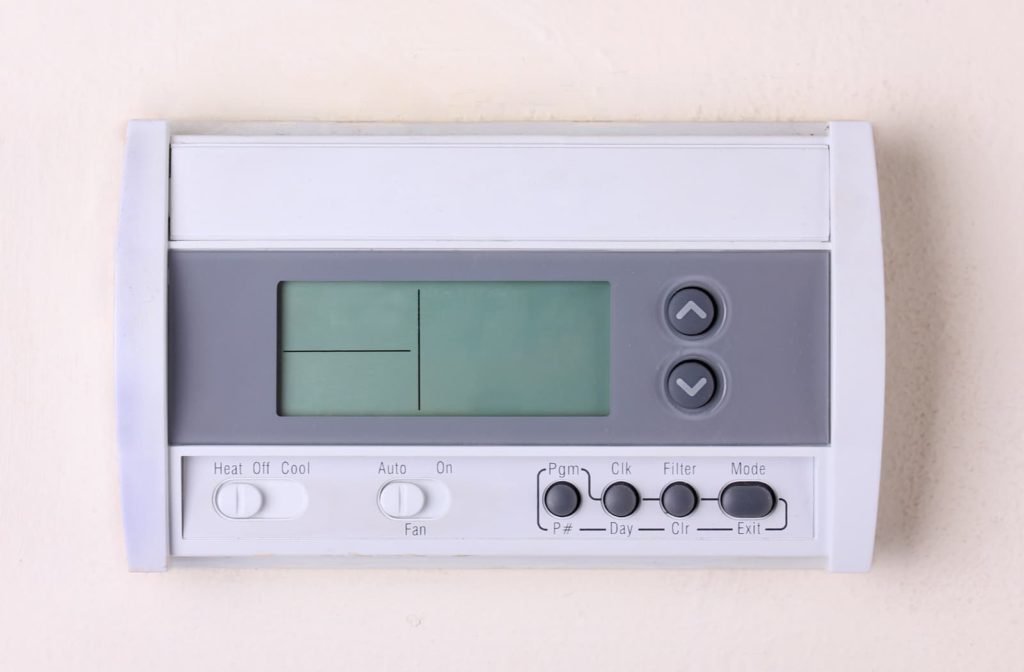11 Common Furnace Repairs & Problems To Watch For
There is never a good time for a furnace malfunction, but it's especially important to have a reliable furnace during Winnipeg winters. Regular maintenance not only keeps your furnace running smoothly, but it can also help you avoid expensive repairs and keep your heating bill low.
To help you learn from Furnasman's 80 years of experience, here are 11 common furnace issues and what you can do to prevent them.
Dirty Furnace Filter
Dirty furnace filters not only lead to air quality issues (which can affect your overall health and wellbeing); they also mean your furnace needs to work harder to push air around your home.
Choosing the Right Filter
A filter with a low MERV (Minimum Efficiency Reporting Value) is like a fishing net full of holes, allowing dust and other particulates to pass through easily and circulate throughout your home. Choosing filters with higher MERV ratings (between 8-13 is ideal for most homes) can improve your home’s air quality dramatically.
When to Replace Your Furnace Filter
Furnace filters are available in single-use or reusable formats. Whichever style you choose, you should be replacing your filter at least once every 3 months or whenever it is visibly dirty. Homes with pets that shed should change their filters more frequently. If you or a family member has asthma or another respiratory disorder, you should also consider changing your filters more frequently.
Ignition Issues
Ignition issues with your furnace and its burners are more common at the beginning of the winter season when you start to use your furnace more regularly.
If you hear a click, but not the roar of the burners lit up, a faulty pilot light or ignition sensor may be the culprit. Fixing this can be as simple as cleaning the pilot light or sensor area. Though this may sound easy, furnaces are still nothing to be trifled with. Unless you have the skills and the knowledge for the job, you should avoid tinkering with your furnace and call a professional instead.
Insufficient Heat
If your furnace is roaring, but your home is still freezing, there are a number of issues that might be at play.
Leaky Air Ducts
If your air ducts are leaking, chances are heated air is escaping from the system. This ends up siphoning warm air away from where it is supposed to go, preventing the heat from being evenly distributed throughout your home. This culprit is likely to blame if some rooms are comfortable while others are freezing.
Incorrect Thermostat Settings
If your thermostat is set to ON, your furnace will blow air regardless of whether it is warm or not. Check your thermostat is set to AUTO, which tells the furnace to only blow air that has been heated to the specified temperature.
Gas Supply Issues
Natural gas-powered furnaces rely on a steady supply of natural gas to heat our homes. If you notice that your burners aren’t reacting, you should check to make sure your gas supply line hasn’t been accidentally turned off. If the supply line is on, but your burners aren’t heating up, you may have a more serious issue, such as a gas leak.
Gas leaks are incredibly dangerous. To help us better detect gas leaks, natural gas companies add mercaptan to all their natural gas supplies. Natural gas is naturally odourless, but mercaptan gives the gas a pungent smell (similar to rotten eggs or boiled cabbage).
If you suspect you might have a gas leak, evacuate your house immediately (make sure to take any pets with you) and contact Manitoba Hydro right away.
Loud Noises
Rumbling, rattling and metal on metal noises are annoying and disruptive. Though some noises may be benign, they could also indicate something is wrong. Here are some common causes of loud furnace noises:
Air Duct Expansion
As air passes through the ducts to be filtered into your home, leaks and flaws in the ducts themselves can cause them to expand and emit a popping or knocking noise. Sealing and insulating your ducts properly can reduce the pressure differential between the inside and outside of the ducts, preventing the ducts from expanding and flexing and silencing the irritating banging noises that result.
Dirty Burners
When our burners become coated with dust, soot, or other grime, they can restrict airflow within your furnace, creating a loud rumbling sound. Having your burners cleaned and maintained regularly can prevent too much grime from building up in the first place.
Cracked Heat Exchanger
If your furnace is making a rattling noise, chances are a cracked heat exchanger is to blame. Heat exchangers usually crack due to general wear and tear or poor airflow caused by a dirty furnace filter.
A cracked heat exchanger is a serious issue and can cause your furnace to leak poisonous carbon monoxide into your home. Carbon monoxide is both odourless and colourless, which is why all homes should be equipped with carbon monoxide detectors. Symptoms of carbon monoxide poisoning include:
- Headache
- Nausea
- Vomiting
- Shortness of breath
- Blurry vision
- Confusion
- Weakness
- Dizziness
- Loss of consciousness
If you suspect that you may have a carbon monoxide leak, evacuate your house immediately (make sure to take any pets with you). Make sure you call 911 right away and do not reenter the house until it has been deemed safe to do so. Next, call Manitoba Hydro and your furnace repair company.
Broken Blower Wheel
A scraping noise, like metal on metal, may be caused by a damaged or broken blower wheel. If your bower wheel is off-balance, your furnace will make a sound anyone whose accidentally sent coins or keys through the washing machine will be immediately familiar with. Your furnace repair company can easily replace a broken or damaged blower wheel.
High Heating Bills
If you have an older or highly inefficient furnace, chances are your heating bill is higher than it should be. High heating bills can also be caused by poor insulation, leaky ducts, or thermostat issues.
Upgrading to a higher efficiency furnace will save you money on bills in the future and can pay for itself in the long run. Higher efficiency furnaces are also more environmentally friendly.

Thermostat Not Working
If your thermostat is not working, you won’t be able to set and adjust temperatures in your house, which can leave your home either too hot or too cold.
To troubleshoot a finicky thermostat, first, check the power source. If your thermostat requires batteries try swapping them out for a new pair. For thermostats that are tied directly into your home’s electrical system, check to make sure you haven’t blown a fuse. If power isn’t the issue, remove the batteries or cut power to the thermostat and then gently remove the cover and check that the inside of your thermostat is clean. Dirty contacts can prevent the thermostat’s internal workings from connecting with one another correctly.
In our experience, a finicky thermostat can usually be fixed by changing the batteries or addressing a loose wire or screw.
Clogged Drain Pipe
If you notice a pool of water around the base of your furnace, you may have a clogged drain pipe. This is a fairly common problem, especially with older models, which can be fixed by cleaning out the condensation tray, or by replacing dirty, overused filters. Just one more reason you should change your furnace filter every 3 months!
A Gas Leak
A gas leak is a serious issue for any homeowner. If you smell rotten eggs or sulphur or hear a quiet hissing sound, chances are you have a gas leak. Gas leaks can cause a variety of health issues and even explosions. If you even suspect you might have a gas leak, evacuate your home immediately and contact Manitoba Hydro. If anyone is feeling unwell, call 911.
A Safety Switch Set to ON
There is a safety switch on the front of the furnace door, which prevents the fan and burner from coming on when the access panel to the furnace door is open. While this safety feature has likely prevented a lot of injuries, it can cause a bit of a headache if you forget to turn it off again.
Check your furnace and make sure your safety switch is turned to OFF.
Schedule Regular Maintenance
Just like you go to the doctor every year to get a checkup, you should also be scheduling regular maintenance appointments for your furnace. Regular maintenance is a preventative measure that helps keep your furnace running along smoothly at maximum efficiency and helps you avoid costly repairs down the road.
Catching potential problems early on also helps reduce stress and can help you save money overall.
When Replacement Is The Only Option
Though repairs can extend the life of your furnace eventually, the time comes when your only option is a replacement.
Furnaces have a life cycle of 8-15 years, depending on how well they are maintained. If your furnace is coming close to the tail end of this range, it may be time for a new furnace.
Furnasman is here to help with any furnace issue you're having, whether you need a simple repair or a full replacement. Contact us for a free in-home assessment to evaluate your furnace.






